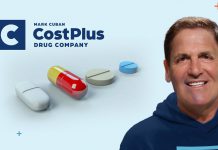A new analysis has found that annual expenditure by the US health industry on drug ads and promotion has increased significantly. The researchers have estimated that US medical marketing reached $30 billion due to extensive advertisements of various drugs.
The advertisements for prescription drugs appeared nearly 5 million times in just a year, causing a recent surge in US medical marketing. The ads were shown on TV, newspapers, websites and elsewhere in 2016. These numbers surged over 20 years as a part of broad US health industry efforts to promote and market various drugs, medical devices, lab tests, and even hospitals.
Dartmouth College researchers, after examining data from the US government and private sectors, estimated that the expenditure on medical marketing has reached $30 billion – up from $18 billion in 1997. The money spent on patient-focused ads climbed fastest. However, marketing to medical professionals still snaffled the biggest share.
They analyzed and evaluated the marketing data from the Medicare, the US Food and Drug Administration, other federal and state agencies, and private companies. The report covers from 1997, when the US FDA eased rules on TV ads, to 2016.
While companies still spend more money to pay providers, the expenditure on consumer-forced ads rose from $2.1 billion in 1997 to $9.6 billion in 2016.
Medical marketing includes advertisements directed to consumers or patients. Many ads are for prescription drugs, lab tests and various medical services offered by hospitals, clinics, and health providers. It also includes marketing to doctors by drug companies and lab test manufacturers.
Medical marketing drives more lab testing and treatments that most patients do not always need, opined researchers of the study.
Researchers said the results have raised questions about the influence of ads on how people see their health and make medical decisions. They further explained that the ads often tell customers that the products are good and effective and they mention side effects in a quick voiceover but do not quantify the benefits and risks. Nor do ads cite the alternatives that may be drug-free or cheaper.
Medical marketing can have advantages as well as disadvantages; that is why we are in a need of strong regulation, said some researchers. They also said that, in recent years, the FDA has taken some action to restrict the marketing of unregulated and unapproved tests that claim to diagnose the risk of various disease.
On should not assume that the FDA has reviewed a drug ad before coming on the TV. However, the FDA has the right to act when the content of a particular ad violates the law.
The researchers opine marketers often target doctors to promote their drugs, steering patients away from proper treatment.
They suggest advertisers to make medical ads with great incredulity. That may include “patient education” and “diseases awareness campaigns.” However, they opine that although this type of marketing can have certain benefits, it can harm when campaigns try to go too technical. Some experts say we should ban medical marketing. However, that is not going to happen. Instead, we need stronger regulation.





















